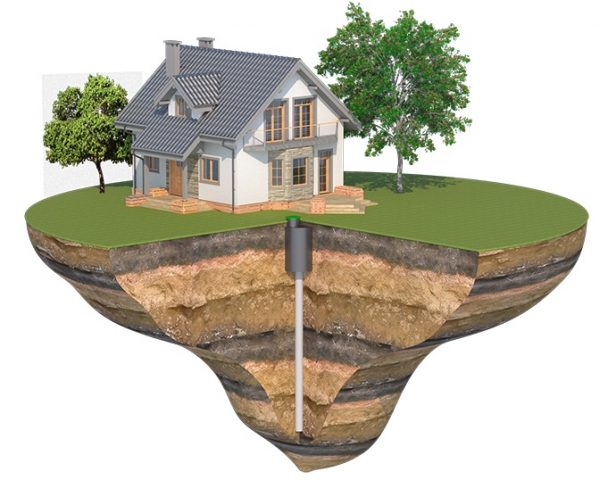Content
For private houses and summer cottages that are not connected to a centralized water supply network, wells are considered the most reliable and safe sources of water supply. Indeed, water located deep underground is safer in terms of contamination compared to open reservoirs or wells. But it also needs additional cleaning before it can be used for drinking and even for household needs.
Why is well water dangerous?
In each area, water from natural sources is unique: it has its own chemical and biological composition, the safety of which cannot be assured without analysis. Experts always advise taking water from a well to a professional laboratory, and then, based on the results, selecting a purification system that is ideal for correcting specific indicators that go beyond the norm.
Even if the water is visually absolutely transparent and has no foreign tastes or odors, this does not mean at all that it is safe. The presence of foreign impurities and abnormal content of chemical substances depends on the depth of water, the mineralogical composition in a particular area, the period and nature of the formation of the underground source.
The most common contaminants found in well water are:
- Visually noticeable insoluble mechanical suspensions - sand, scale, clay particles, organic fragments. Characteristic for sandy, loamy soil;
- Nitrates - accumulate in the soil as a result of the washout of fertilizers and industrial waste, and from there they can get into the well;
- Iron in di- and trivalent forms. Ferrous iron is often found in shallow wells and can be seen as insoluble, rust-colored flakes. Compounds of ferric iron are formed when rocks rich in this metal are dissolved in water. Visually, they become noticeable only upon settling and contact with oxygen;
- Hardness salts are calcium and magnesium compounds (chlorides, bicarbonates, sulfates). These compounds are responsible for water hardness. Inflated values are obtained due to the passage of water through sedimentary rocks. The amount of hardness salts may vary throughout the year depending on the season and weather;
- Organic compounds, products of decomposition of living organisms. They are typical for shallow aquifers, where they fall due to the penetration of domestic, agricultural and man-made wastewater into the soil. The presence of contaminants in this category can be detected by the presence of an unpleasant odor and taste, cloudy color;
- Hydrogen sulfide. It can get into deep wells if formations containing sulfates and sulfides are opened. It is more common in shallow springs and can be recognized by its characteristic pungent odor.
If you consume contaminated water every day, even with minor deviations it can cause serious harm to health, lead to excessive accumulation of harmful elements or, conversely, leaching of useful ones. The result is a violation of the correct balance of micro- and macroelements in the body, which will certainly affect the state of health and general well-being. Dirty water is also harmful to household appliances and plumbing fixtures: it leaves lime deposits and rust on them, which significantly shorten their service life and spoil their appearance.
An individually selected water treatment system for a country house will help remove contaminants and bring all indicators back to normal. On the website of the Geyser company, one of the largest manufacturers of water filters, you can familiarize yourself with different options and make a choice depending on the initial state of your water.
Types and differences of well filters
When purifying water from a well, a number of methods are used. In most cases, cleaning systems combine several of them to achieve the desired results.
- Mechanical cleaning. When passing through such a filter, water gets rid of all coarse large impurities such as sand or clay;
- Deferrization. At this stage, substances containing metals - manganese and iron - are removed from the water. One of the possible methods is aeration, when these elements are oxidized by atmospheric oxygen and pass from dissolved to solid form, due to which they are retained in the thickness of the load;
- Ion exchange. The most effective and safe way to reduce water hardness: calcium and magnesium are replaced with safe elements of ion exchange resins;
- Sorption.Activated carbon filters made from coconut shells are capable of absorbing organic compounds and free chlorine. When passing through such a cartridge, water becomes pleasant to the taste and gets rid of all foreign odors;
- Reverse osmosis. The most universal cleaning method. When passing through a special membrane with micropores, water gets rid of all impurities whose particle size exceeds 0.1 nanometer - and this is almost all substances except the water molecules themselves;
- Ultraviolet disinfection. Allows you to get rid of microbiological contaminants, viruses, infections contained in water.
If necessary, already purified water is passed through mineralizers, which enrich it with the necessary substances. Too “empty” and soft water is also not beneficial for the body.
Where and how to install a water purification system
Ideally, the filter is located in a separate, specially equipped room. But if this is not possible, you can allocate a separate room in the basement or on the ground floor, in the boiler room or in the utility room, where you can run the pipeline from the well.
It is best to entrust the installation of a professional cleaning system to qualified craftsmen, employees of the manufacturer of the filter you have chosen. They will be able to competently perform installation and commissioning of equipment. And the guarantee in this case will apply not only to the filters themselves, but also to the work performed. Specialists will take care of maintenance and, if necessary, repairs.






